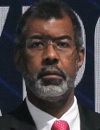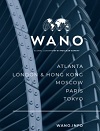 |
||
|
Managing Nuclear Knowledge - A Forward Looking Story Yanko L. Yanev, Victor M. Murogov, PUBLISHED 19.03.2020 Prof. Dr. Yanko L. Yanev, Nuclear Knowledge Management Institute, Austria Prof. Dr. Victor M. Murogov, MEPhI, Moscow, Russia. Prof. Dr. Yanko L. Yanev 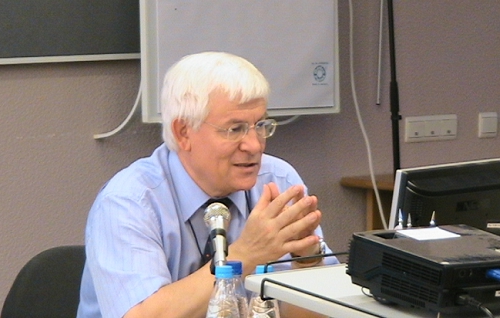 Prof. Dr. Victor M. Murogov 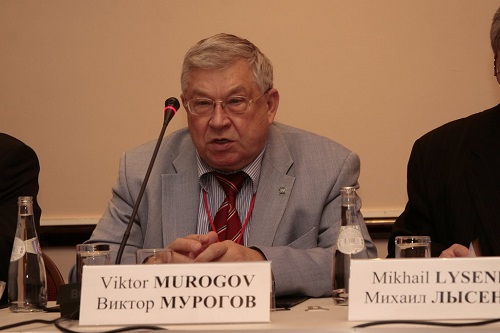 Knowledge management came into existence as a new stream in the distinct area of information management at the beginning of the 90-ies. Many believe that the term "knowledge management" has been invented by the consulting community. The accession of the Internet and the tremendous development in information technology has opened a huge challenge of how to warrant that information is properly managed and made accessible for use or reuse. The second "wave" of knowledge management followed the pioneer research or Nonaka and Takeuchi in Japan, which put in the focus the human knowledge, its internalization, sharing and socialization. At the beginning of the 21st century knowledge management was widely advertised and applied with varying success in different industries and organizations. Starting with the beginning of the millennium, nuclear organizations, especially power plants, embarked on knowledge management programs and knowledge management (KM) emerged as a powerful strategy to deal with important and in some cases critical issues of loss of knowledge through attrition and generation change. Preserving knowledge of key nuclear experts and the need for knowledge transfer have also attracted a lot of attention and efforts in developing new approaches and methodologies that would be suitable for complex areas of special expertise and skills accumulated after many years of nuclear operations. Applying systematic KM practices in operating organizations and regulatory bodies, in technical support organizations (TSOs), design bureaus and scientific institutes, has proven to be efficient and necessary for maintaining competence and skills for achieving high level of safety and operational performance. KM projects came to the nuclear area after similar issues have been addressed in other industries (Sandia National Laboratory, Tennessee Valley Authority, Scandia, IBM and others). They have evolved independently to achieve both the same overall objective to maintain efficiency in operations and to keep and enhance organizational and individual competence. While every nuclear organization is faced with specific tasks and challenges in maintaining knowledge and skills and keeping safety-oriented attitude on a high level, within the last at least 10 years some tendencies, challenging Nuclear Knowledge Management have been observed and widely discussed: - Declining interest in nuclear science and technology in younger generations; - Diminishing capacity of educational institutions due to retirement of professors and financial difficulties to maintain nuclear installations as research reactors, radiation labs and other infrastructure, - Complicated knowledge and experience transfer from retiring nuclear experts; - Possibility of knowledge deficient decision making on the top management level; - Lack of understanding the need to invest in innovative methods andtechnology for knowledge preservation and/or knowledge creation; - In countries interested in nuclear power, but with no previous experience, knowledge is a critical component of national nuclear infrastructure development. Most of the above issues and challenges are related to maintaining knowledge and competence and creating an environment of open communication, knowledge sharing and knowledge transfer. While most of the KM efforts in other areas are directed towards better efficiency in operations, in the nuclear field, knowledge and competence directly or indirectly, may influence the safe operations of a nuclear facility and put a stamp on the safety attitude and safety performance. Loss of institutional memory and "forgotten" past can be a serious challenge for innovation. It can cause delays in developing new, innovative designs, as well as eventually postpones the introduction of next generation of nuclear reactors. Knowledge management in the IAEA The safe use of licensed nuclear facilities and technologies is reliant on the ongoing availability and maintenance of suitable knowledge and expertise, including an adequate understanding of related safety issues. The ability of organizations that operate or utilize nuclear technology to take safe decisions and actions can be affected by knowledge gaps or knowledge loss. Appropriate knowledge management methods and supporting technology are needed to establish and manage nuclear knowledge, competencies, information and records, work processes, data interpretation, analysis and verification techniques. Power and non-power applications of nuclear technologies require a stable and permanently growing base of nuclear knowledge and trained human resources, be it in the areas of nuclear safety or energy production, cancer treatment or food and agriculture. Nuclear Knowledge Management has become an increasingly important element of the nuclear sector management in recent years. Countries with existing nuclear power and research programs need to secure the capacities and human resources necessary to sustain the safe operation of existing installations, including their decommissioning and related programs for spent fuel and waste. Replacing retiring staff and attracting the young generation to a career in the nuclear field are key challenges. Countries with expanding nuclear power programs require skilled and trained human resources to design and operate future nuclear installations. Capacity building through training, education and transfer of knowledge from centers of knowledge to centers of growth are essential. The capability to develop and use nuclear power is still confined in a relatively small number of countries: vendors or users of nuclear power technology. In the last twenty years some unique characteristics of nuclear power technology, such as its longevity (in fact a nuclear power program from cradle to grave continues for a whole century!), the specific demographics and requirements for competent human resource and the reversals in the political commitments of governments, created a serious concern for sustaining nuclear knowledge and competence at appropriate level. From the very beginning of its establishment, the IAEA has been a reliable and accessible source of scientific and technical information and knowledge on the peaceful use of nuclear technology and nuclear safety and security. It was only after the Chernobyl accident that trust in nuclear technology has been strongly hurt in many parts of the world. This lead to a serious social dissatisfaction from nuclear energy and a serious lack of interest in nuclear science in the young generation. Shutting down of many nuclear power projects in North America and Europe and the aging of the nuclear work force created a new risk of loosing critical knowledge in different areas from construction and operation to decommissioning and waste management. Maintaining innovation capacity and competence in design was also threatened although USA and a number of interested countries established a "4th generation" innovative nuclear reactors project. The IAEA on its own initiated an innovative project oriented to holistic policy, infrastructure and approaches for developing a nuclear energy utilization programs. By the end of the 90-ties it was clear that maintaining knowledge and competence in nuclear science and technology cannot be left only to market forces and industry alone and governments should take a serious role. This was the key objective to establish a separate IAEA program to support Member States in their efforts to maintain knowledge and competence in the existing nuclear programs. In September 2002 the General Conference adopted with full consensus a resolution on managing nuclear knowledge introduced by Canada and supported by USA, Russia, China, France and many other countries. The Nuclear Knowledge Management Program has been created on the basis of this resolution. For better understanding of the objectives of the Nuclear Knowledge Management program from the very early days of its creation hereunder is the original text of the resolution:
For almost 20 years of its existence the IAEA program on "Managing Nuclear Knowledge has been implemented as a typical crosscutting program. Its role has been to lead knowledge management activities and serve as centre of excellence in Knowledge Management for the Agency in an environment when every department and program are initiating and implementing specific knowledge management activities in their own area (SG, MT, NS, NA and TC). The program has successfully performed in all Agency's strategic areas and has received compliments from Member States. During all this years the Nuclear Knowledge Management Program of the IAEA has been the focal point and forum for exchange and sharing of information and experience on managing nuclear knowledge in Member States, reflected in the biannual reports to the GC and the respective resolutions. The most important contribution of the IAEA to the Member States has been raising the awareness of applying systematic and integrated knowledge management for improved safety and economics of nuclear energy. A forward looking objective for nuclear knowledge management Strategic objectives are linked to a mission and formulated vision. Strategic objectives usually meet the conditions and principles of SMART (specific, measurable, achievable, realistic and timely). In developing a strategic objective of the Nuclear Knowledge Management for the next five to ten years the following external elements (operating environment) need to be assessed: - Nuclear energy landscape in the world and the role of Nuclear Knowledge Management for knowledge preservation and/or knowledge transfer. - Emerging needs in countries for Managing Nuclear Knowledge and Information. - Technology development in the area of information and knowledge management. - Impact from global issues and trends. Nuclear energy landscape The nuclear energy landscape of the next 10 years will be dominated by "life extension" of the existing nuclear fleet in the countries currently using nuclear power (namely North America, Europe and Japan); new build and growth in China and in small number of countries in Eastern Europe and Gulf region; strong interest and preparatory work in a number of African countries and some countries in South East Asia. Knowledge management will be needed for maintaining competence in existing nuclear countries and enabling knowledge transfer and capacity building in "new comers". Especially important will be the introduction of knowledge management requirements through the new ISO standards: ISO 9001/2015 (Quality management) and the new ISO 30401 (Knowledge management) and their potential impact on the nuclear area. Emerging needs in countries The needs of countries with continued use of nuclear technology will be in methodology and guidance, training in Nuclear Knowledge Management, support to university programs in nuclear disciplines through networking and sharing of experience, educational materials and access to innovative technology. The developing countries with interest in introducing nuclear energy technology ("newcomers") continue to have strong interest in access to information, experience and good practices and technology support for capacity building and infrastructure development. Technology development Technology has always been an enabler for knowledge management. Technology alone cannot deliver successful knowledge management, but knowledge management in any but the smallest organisation will need technology. The last 20 years have had a remarkable impact on managing information and knowledge in general and in the nuclear area in particular. The observed and expected further explosive development in Information and Communication Technology will influence knowledge management in three aspects: - New technologies that relate to how we work, learn, and interact within the organization will inevitably have a strong impact on performance, including quick and accurate access to the needed information and knowledge. "Big Data" access and "Smart knowledge bases" that help to immediately tap into the institutional knowledge and put it to work will be needed. - Changes in the makeup and habits of the "new young generation" nuclear workforce will impact KM's purpose and how it's practiced - and new skills and knowledge for KM will be required. Augmented cognition - human cognition augmented by computers and smart technology "will accelerate as a trend affecting the KM area over the next three to five years" and will continue to change how people and organizations incorporate technology into the decision-making process. - Nuclear technology is a strongly regulated and conservative segment of human activity. At the same time globalization in innovative technology and generation change require that knowledge management approaches follow technology development. States, using or interested in introducing nuclear energy have different level of industrial and nuclear infrastructure development but much closer level of use and application of information technology. ICT technology will be key in developing the needed nuclear infrastructure and national self-sufficiency in nuclear science and technology. Impact from global issues Issues of global character, which lead to complex political decisions may seriously impact Nuclear Knowledge Management programs and activities in countries and in the IAEA. One of these is climate change and decarbonization of the global energy system. While serious efforts are on the way in a number of countries using nuclear technology and in international organizations (vs. IAEA, IEA, WNA, WANO) to promote nuclear power as unavoidable non-carbon source of electricity, it's massive introduction may becomerestricted or even impossible due to loss of knowledge and innovative development, alongside other political issues such as non-proliferation and public acceptance. The most recent issue of unprecedented global character linked to the corona virus COVID-19 infection and the global restrictions introduced require a serios rethinking of our current arrangements in terms of availability of human knowledge and technology needed for safe operation of any nuclear facility. Many countries with long term nuclear programs rely to seasoned operators and experts whose availability may become critically influenced by pandemic events, restrictions of movement, closing of borders, air-travel, etc. New contingency plans for sustaining knowledge and make it available for safe operations need to be elaborated and resourced. Conclusions The development of Nuclear Knowledge Management programs and initiatives in countries using nuclear technology has come as a response to the pressing needs in maintaining nuclear knowledge, critical information in different areas of nuclear science and technology and retaining priceless operational experience, which leaving experts and professionals take with them when they retire. From the very beginning since nuclear knowledge management has emerged as important management strategy in the nuclear community, the IAEA has served as a resource of methodology and guidance, providing training and alerting senior managers in many countries on the importance of managing knowledge. Looming losses from staff retirement and attrition leading to a disconnect between science and practice will always be at the top of the industry agenda when relating to assuring relevant skills and expertise, securing critical knowledge, and effecting sustainable inter-generational transfer. Extending the life of the current nuclear fleet and potentially establishing nuclear electricity generation as important source of low carbon electricity in the near future will be a critical challenge for knowledge management in the nuclear community as a whole. Nuclear knowledge needs to be managed more pro-actively throughout the full life-cycle of nuclear facilities, to be pursued across national and organizational borders and barriers, always as a part of anintegrated management system. Used documents and materials 1. IAEA Program and Budget 2018-2019,GC(61)4 2. IAEA Medium Term Strategy 2018 -2023 3. Subprogram 1.3.3. Nuclear Knowledge Management, SBP_1010048PB_2018_19, Final 4. Strengthening the Agency Activities related to nuclear science, technology and applications, GC(60)RES/12, Nuclear Knowledge 5. Information Resources from www.iaea.org Topics: Nuclear knowledge Other news: The first batch of MOX fuel was loaded into the reactor at the Beloyarsk NPP The complete MOX-core is planned in 2021. 442 nuclear units are operating in the world Another 53 units are under construction. WANO, IAEA, EPRI collaborate to help new nuclear power units to start up safely and on time The white paper is available here (bottom left section to download). |
Hero of the day 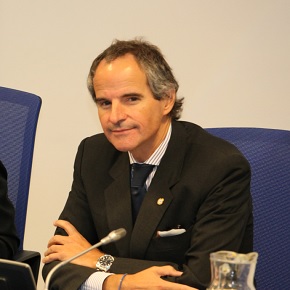
IAEA Board Appoints Rafael Grossi as Director General Ambassador Rafael Mariano Grossi is set to take office as Director General of the International Atomic Energy Agency (IAEA) in early December, following his appointment to the post by the Agency's Board of Governors on Wednesday 30 October 2019. INTERVIEW
William D. Magwood, IV OPINION
WANO |
